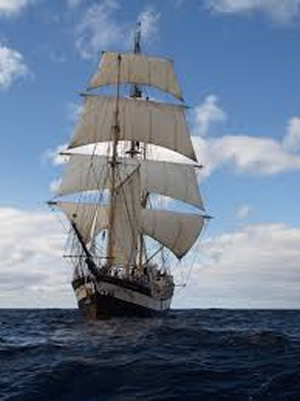How has the pulley contributed to the spread of civilisation?
Between the 15th and 17th centuries, known as the Age of Discovery, Europe was desperate for spices, gold and silver. Voyages of exploration were undertaken by many famous explorers which concluded in the discovery and interaction between many different cultures. Huge volumes of cargo needed to be shifted quickly and efficiently by large sailing ships. Something was needed to make the loading of ships easy and quick. Not only was loading the ships critical but a way of hoisting heavy sails was also needed. A simple machine, that was discovered by Archimedes many centuries before, was soon to make its mark on sea travel.
|
| Lifting heavy objects to great heights is not easy. Not always can we use levers. Sailing ships experience great wind forces. Large heavy sails trap the wind to propel the vessel forwards. These sails need to be quickly hoisted in order to make the most of the favourable winds. |

Sailing ships made use of pulley systems in order to lift heavy sails and cargo.
|

A simple pulley system. Notice that rope is guided through the grooves of a set of rotating wheels.
|
A pulley is a set of rotating wheels with a grooved circumference. The grooves usually guide rope or cable. Pulleys change the direction and size of the applied force.
|
|
The simplest pulley system is made of one pulley. The pulley system shown on the left changes the direction of the applied force. As the person pulls down on the rope the heavy weight on the other end moves up.This makes lifting easier as the person can use their weight to assist in lifting. |
|
The more pulleys that are used the easier it is to lift the load. Notice that if two pulleys are used then a weight half that of the load can be used to lift it. |
|
A four pulley system can multiply the effort four times. A 25kg object can just lift a 100kg load in a frictionless pulley system. The simple machine shown on the right not only changes the direction of the applied force but also multiplies it by four. |
|
|




